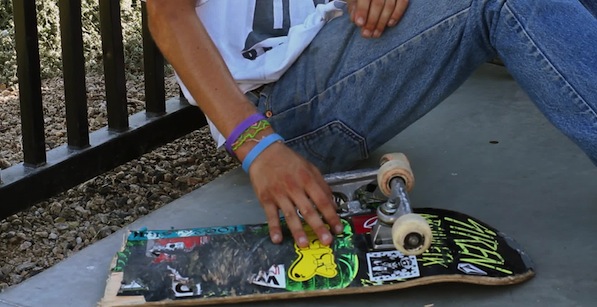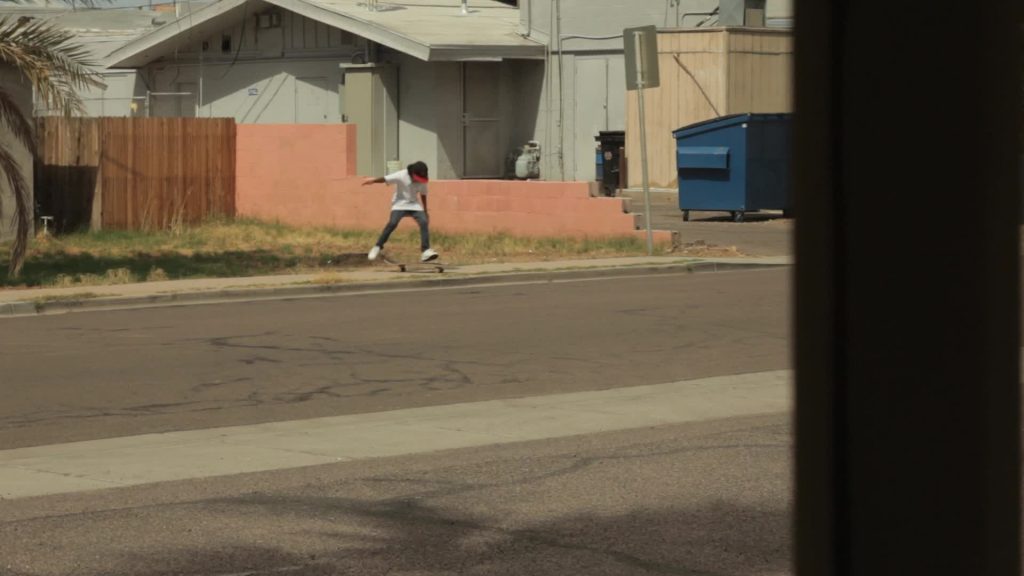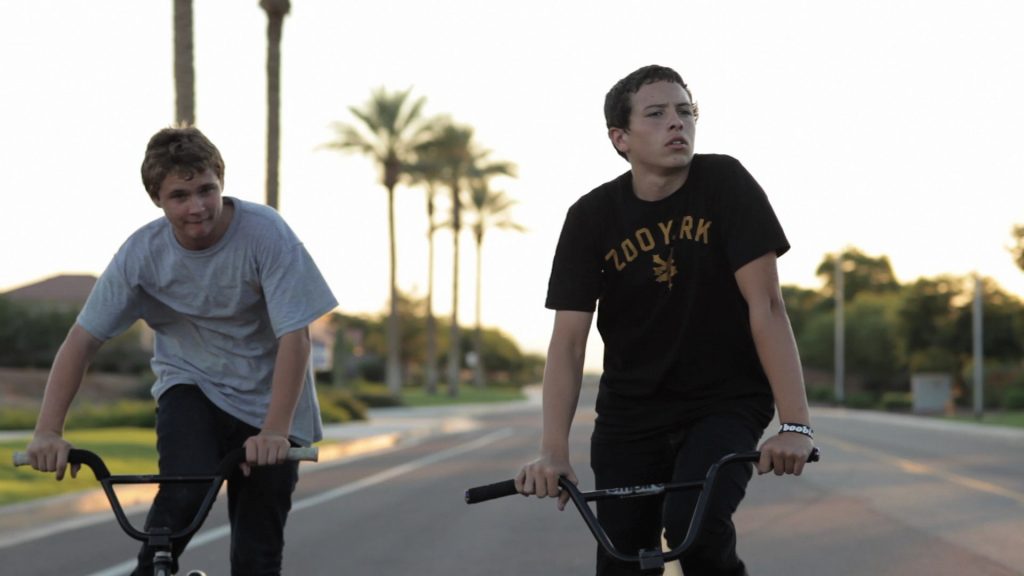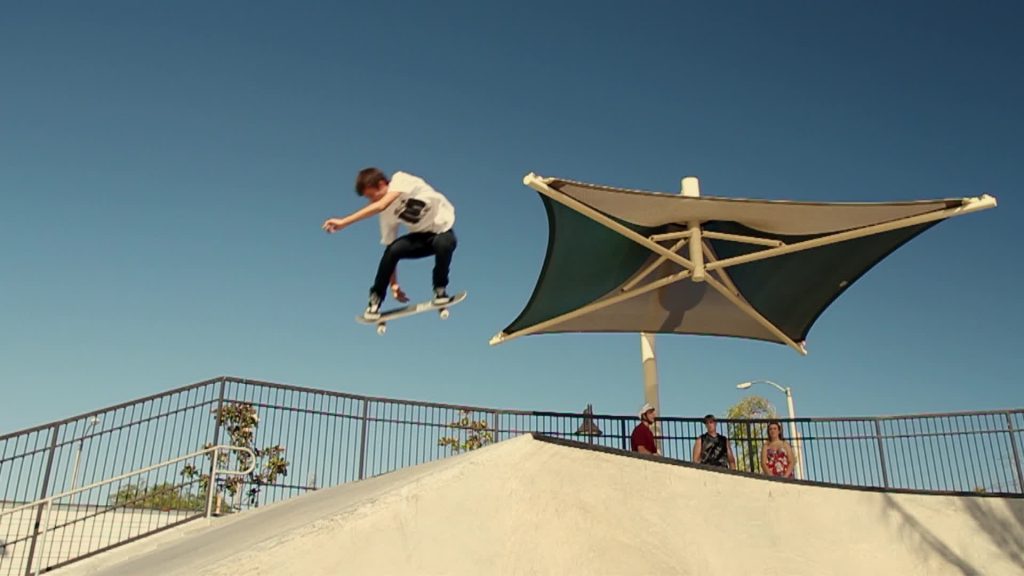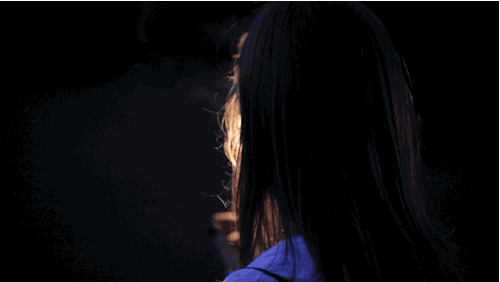In this month’s installment of “The Edit,” I want to talk a little about when not to cut. Towards the very end of Tim Sutton’s Pavilion, a teenage boy watches out the window at a younger kid kicking along on a skateboard on the sidewalk across the street. In a single long shot, the kid gets up his momentum going one way, lands a flip, keeps rolling along, tries another one—and lands awkwardly, the board skittering off. Sutton keeps filming, cutting away only when the boy picks up his board and starts back the way he came. There is a definite sense of youthful ennui in the continuous uninflected anticlimax of the shot, but also great beauty in its duration: the beauty of summer vacation stretching out endlessly, with nothing else to do except work on perfecting the trick, and all the time in the world to get it right.
Pavilion, like docu-fiction hybrid Putty Hill, gives a low-key cushion of fiction to the slightly aimless lives of its subject-actors. (In an interview, Sutton recalled of his recruited cast, “the kids weren’t interested in the story—they were really into making a movie—but they didn’t care about the story and so I didn’t push it.”) Pavilion opens with a minute-plus scene of teenagers wordlessly setting off firecrackers, the camera drifting from kid to kid and up into the air, with such cuts as come seeming fairly purposeless, never signaling a change in camera position and only occasionally, through the movement of the figures in the frame, a definite lapse in time.
To the accompaniment of a soft-spoken score by The Sea and Cake’s Sam Prekop, the narrative itself proceeds with this same adolescent affectlessness, more attentive to the moment-to-moment textures of summer twilight than to any grand plan. In the same way that the camera so often coasts alongside kids silently riding stunt bikes across ground so flat they barely have to pedal, the story (mostly) follows along with one kid as he’s quietly shuttled from parent to parent, from lakeside greenery to the desert Southwest, smoking splifs, playing video games, jumping off diving boards and just wandering around, on foot and on wheels. Sutton’s story rhythms, like the teenagers he films, aren’t lazy, they’re open-ended.
In drifting long shots such as an early one in which shirtless, impossibly skinny kids push and pedal around a public square, trying out low-difficulty flips and wheelies with moderate success, Pavilion, like the equally terrific skate-kid documentaries Dragonslayer and Only the Young (the latter discussed below), gives the gloss of a theatrical genre to certain tendencies of the underground skate videos. These films are tonally very different from skate videos: young people do not generally experience, or portray, their free time as ambient rhapsody, for one. But they do retain a feel for the way the urge to capture tricks for posterity—skateboarding is sculpting in time, to borrow a phrase, and also in air—bleeds into the youthful urge towards more general self-documentation of an equally ephemeral existence on solid ground.
Benjamin Strong, the only film critic of my acquaintance who, to my knowledge, regularly shreds, has written about the early skate videos of directors such as Stacy Peralta and Spike Jonze, noting that the videos are more multifaceted than mere highlight reels. The rambling downtime between tricks is part of their insider’s depiction of a fully inhabited subculture. And crucially, Jonze wouldn’t dream of editing around slams (“when a skater hits the ground after a failed maneuver”). This not because of the slapstick value, but because, as Strong explains, “overcoming fear is essential to skateboarding. This isn’t a matter of machismo so much as physics.” Falling down, physical pain, humiliation in front of your peers—these are necessary steps on the way towards pulling off something legitimately impressive.
In the same piece, Strong took issue with my own positive response to Gus Van Sant’s Paranoid Park: “The slow motion effects so many reviewers have praised are largely an anomaly in the traditional skate video, where the difficulty of a trick cannot be appreciated unless it is seen in real time.”
This warning against lyricism is, I think, implicitly also a warning against editing out failure from accounts of youth. No growth without growing pains. Only the Young, with its slow-motion montages of flips and landings perfectly executed by its teenaged subjects, violates this principle at times—violates the letter, certainly, though maybe not its spirit.
Only the Young, which like Pavilion has been compared to the work of Gus Van Sant, is more conventionally a documentary. Filmmakers Elizabeth Mims and Jason Tippet follow three teenagers, best friends Garrison and Kevin, and Garrison’s sometime-almost-girlfriend Skye, around the abandoned and populated swimming pools and mini-golf courses of Santa Clara, California, along with the maybe-significant others that enter and exit their orbits, tentatively. As a year passes, time is marked less by the interminably dry and sunny weather than the various dyed and shaved-up hairstyles the kids are constantly trying out and discarding (though their clothes and accessories betray a consistent brand-loyalty to overlapping signifiers which are each, in their way, defiant: skating, SoCal punk, Straight Edge culture and Christ). Like Pavilion, Only the Young includes scenes of teenagers idly shooting off firecrackers, because youth is beauty and wastefulness. The film also features what is quite possibly the most perfect sentence ever spoken by an American teenager: “I didn’t know they broke up until I checked Facebook after church.”
Many of the scenes of Kevin and Garrison skateboarding follow the template set forth in the title sequence, a soul-music montage of the two coasting along in languid slo-mo, to the accompaniment of a soul song. When we first see them skate in a local park, they’re pulling off a series of aerials in shots that are timed to discrete tricks, with the camera establishing the space just before Kevin or Garrison enters the frame, and cutting away upon the successful execution of a trick. In the third and final trick shot the camera is placed inside a halfpipe, its walls symmetrically arranged as a frame-within-a-frame, as Garrison recedes; the cut away is timed to his fairly clinical ollie up and out of the bowl. All this is in slow motion, again, this time accompanied on the sound track by interviews—again, their grace is made to seem incidental. Sequences are often, in fact, staged in montage incompatible with a strictly vérité style and its implications of truthfulness: in one scene, Kevin and Garrison launch themselves into a swimming pool several times (including a railslide into the shallow end), again in slow motion. We see them do this several times in a row, from several different camera positions, often from a medium or longer camera position, set up in front of the pool so that the guys approach camera rather than the camera following behind—the effect is an unbroken experience of physical eloquence, cutting around all the knotty logistics, monotony and confusion.
This is clearly youth as it wishes to be seen, or as adults wish to remember it, with all the awkward edges smoothed away. If anything in Only the Young is cut like a skate video, in fact, it’s the interviews, in which Kevin, Garrison and Skye all at different times wipe out in real-time during unbroken takes.
In the space of a single afternoon’s interviews, with Kevin and Garrison in a two-shot in a front step, the two talk to each other, via the camera, about Kevin’s cutting—this is a tactic we see frequently, uncomfortable to-camera joking standing in for hard person-to-person truths—and then, in new take initially seeming to continue the conversation, Kevin changes the subject, to the time he kissed Skye, who is just off-screen. The moment plays out agonizingly, with Kevin apologizing for bringing it up, Garrison looking down, behind him, off into the distance, anywhere but at his friends or the camera. Mims and Tippet cut away only after a full beat of uncomfortable silence and studiously avoided eye contact.
The first time the filmmakers show us either Kevin or Garrison botching a skateboarding trick, it’s when Kevin is skating in a competition in Arizona. This montage, still in slo-mo and to music, shows Kevin, sharing a park with many other skaters, breaking his board after landing a flip, and then falling several times more. Life in public is difficult. If the film is sentimental, it’s with this knowledge in mind. The last word in the film is given to Kevin, in cap and gown, about to rejoin his friends after his high school graduation: “Excuse me, I’ve got to run into the big crowd.”

